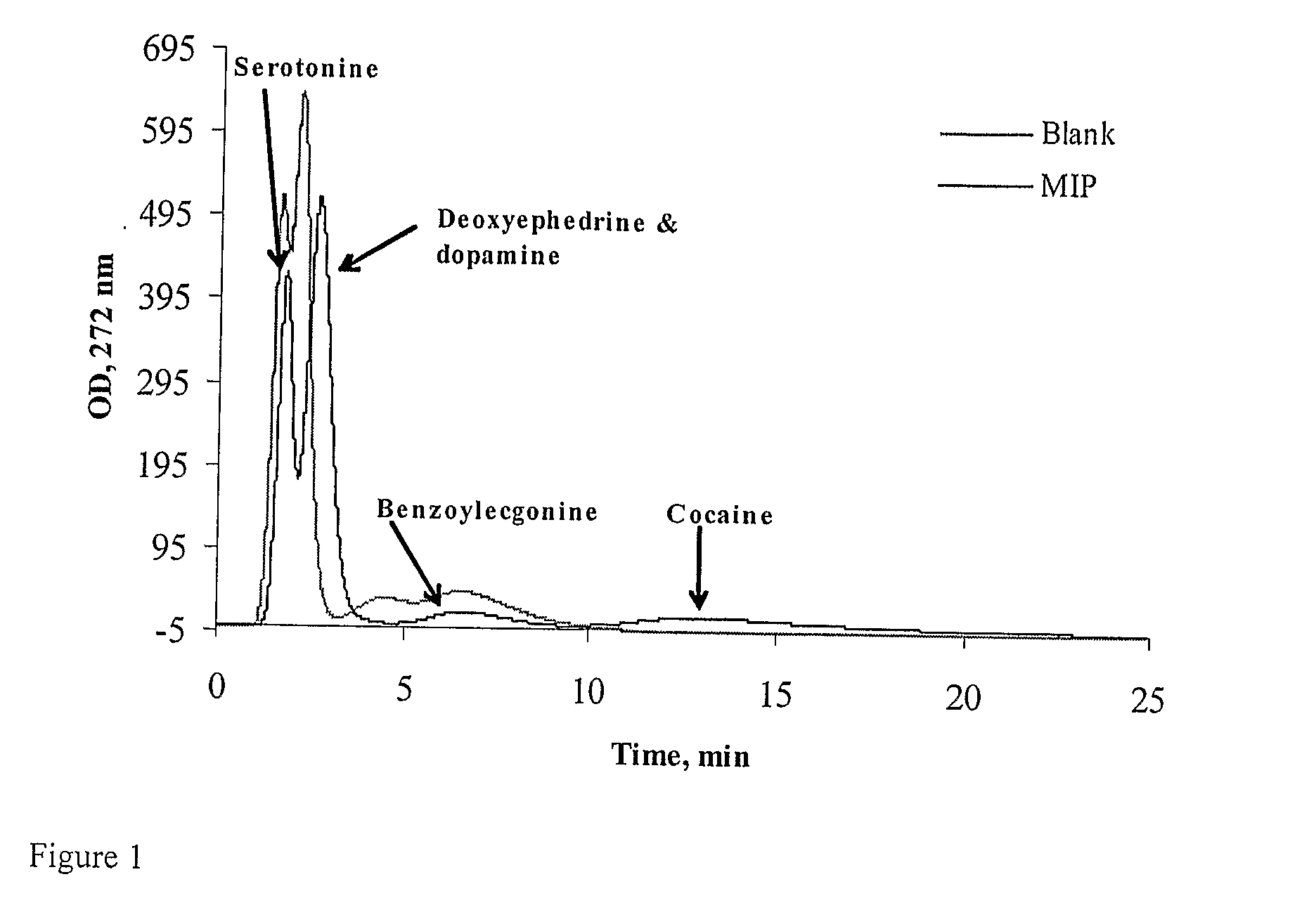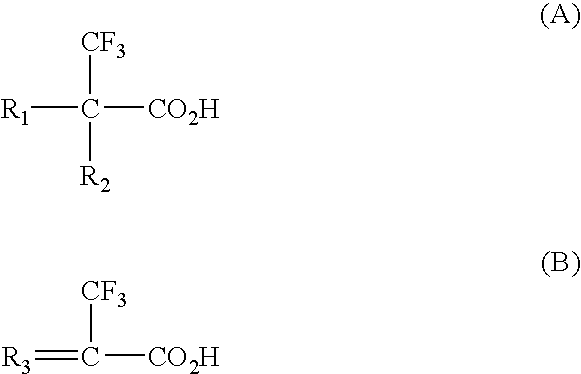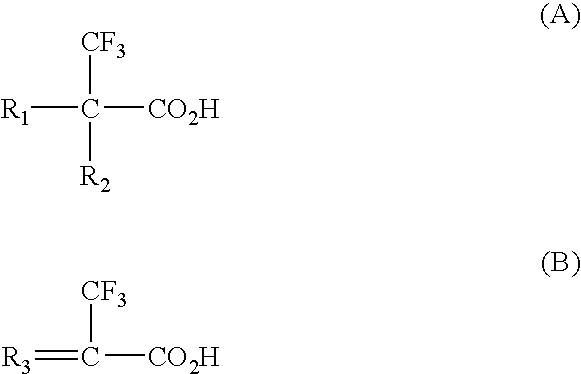Binding drugs of abuse
- Summary
- Abstract
- Description
- Claims
- Application Information
AI Technical Summary
Benefits of technology
Problems solved by technology
Method used
Image
Examples
example 1
Synthesis of cross-linked 2-trifluoromethyl acrylic acid (TFMAA)
[0035]The polymer was synthesised by mixing 1 g of 2-trifluoromethyl acrylic acid (TFMAA), 4 g of cross-linker, ethylene glycol dimethacrylate (EGDMA), 0.1 g of initiator (1,1′-azobis (cyclohexanecarbonitrile)), and 5 g of solvent dimethylformamide (DMF). The polymer was illuminated by UV for 20 min using a Hönle 100 UV lamp (intensity 0.157 W / cm2) and was kept at 80° C. for 1 day. After synthesis, polymer was ground and wet-sieved with methanol to obtain particles of 63-106 μm.
example 2
Synthesis of Molecularly Imprinted Polymers for Cocaine, Deoxyephedrine, Methadone and Morphine
[0036]The polymer compositions are given in the Table 1. An excess of functional monomer proportional to the template (˜4 times) was used in order to ensure good interactions with all template molecules and consequent formation of maximum number of binding sites. Blank polymers were prepared using the same composition but in the absence of template. The polymers were polymerised using Hönle 100 UV lamp for 20 min and then incubated in the oil bath at 80° C. for 1 day. Polymers were ground and sieved using methanol. The fraction between 45 and 106 μm was collected and packed in stainless steel HPLC columns (50×4.6 mm) using Slurry Packer model 1666 (Alltech, UK).
TABLE 1Compositions of the polymers.Poly-1,1-azobis-merTemplate2-TFMAAEGDMAToluene(carbonitrile)P1Cocaine, 250 mg 460 mg4.3 g5g50 mgC1— 460 mg4.3 g5g50 mgP2Methadone,403.2 mg4.35 g 550 mg250 mgC2—403.2 mg4.35 g 550 mgP3Morphine, ...
example 3
Testing of Polymer Performance in Chromatographic Conditions
[0037]The HPLC columns prepared in Example 2 were used for analysis of polymer binding to the drugs in aqueous conditions. The evaluation experiments were carried out using an HPLC system which included a ConstaMetric-3200 solvent delivery system (LDC Analytical, UK), PerkinElmer ISS-100 automatic injection system and a Waters Lambda-Max Model 481 LC Detector (UK). HPLC analysis here and in the following example was performed at a flow-rate of 1.0 mL·min−1 and monitored by UV detector at 260 nm. Injection amounts were 20 μg in 20 μL injection volume. All reported chromatographic data represent the results of 3 -5 concordant experiments. The standard deviation of the measurements was below 5%. All polymers demonstrated very high affinity to drugs in water to the degree that it was impossible to elute adsorbed compound from the column using water. In order to achieve elution, the eluant was acidified with acetic acid. The res...
PUM
| Property | Measurement | Unit |
|---|---|---|
| Mass | aaaaa | aaaaa |
| Mass | aaaaa | aaaaa |
| Mass | aaaaa | aaaaa |
Abstract
Description
Claims
Application Information
 Login to View More
Login to View More - R&D
- Intellectual Property
- Life Sciences
- Materials
- Tech Scout
- Unparalleled Data Quality
- Higher Quality Content
- 60% Fewer Hallucinations
Browse by: Latest US Patents, China's latest patents, Technical Efficacy Thesaurus, Application Domain, Technology Topic, Popular Technical Reports.
© 2025 PatSnap. All rights reserved.Legal|Privacy policy|Modern Slavery Act Transparency Statement|Sitemap|About US| Contact US: help@patsnap.com



